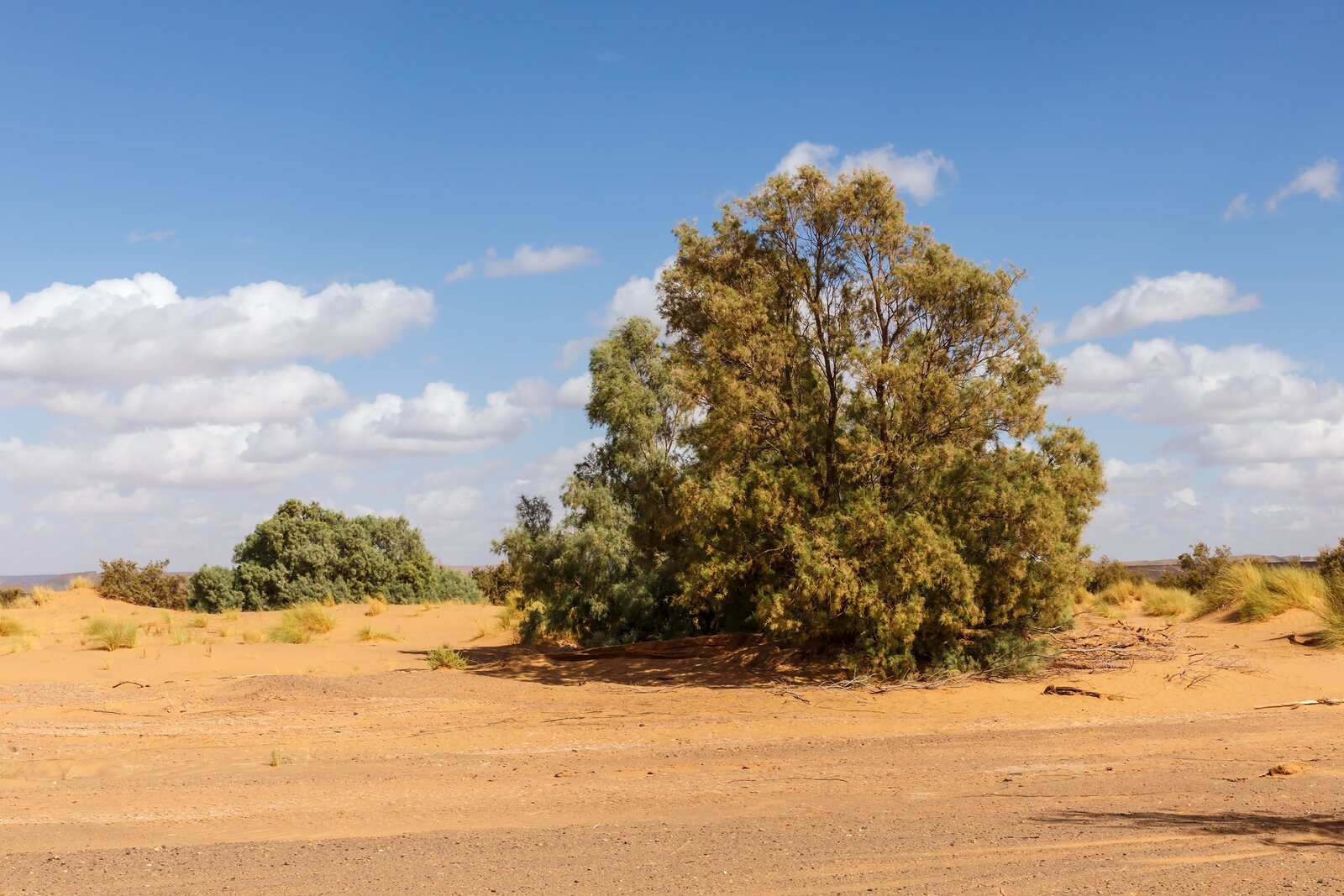A native UAE desert plant could inspire advancements in air-to-water tech

A desert shrub can serve as blueprint for water-collection tech: A desert plant native to the UAE has the ability to extract and condense water from the humid and foggy atmosphere through salts it excretes, a process that can be used as a blueprint for the development of new technologies for water harnessing and cloud seeding, according to a statement.
The findings: A team of scientists at NYU Abu Dhabi’s Smart Materials Lab and NYU Abu Dhabi Institute’s Center for Smart Engineering Materials (CSEM) have published research (pdf) that studies the salt-tolerant Tamarix aphylla’s ability to absorb saline water from the soil through its roots, filters out the salt, and expels the concentrated salt solution onto the outer surface of its leaves. It is the salt crystals that are left behind after the solution evaporates that have the ability to attract moisture from the air, even when the humidity levels are reasonably low (55% relative humidity). The plant then absorbs the moisture that condenses onto the surface of the plant's leaves, helping it thrive in the water-scarce desert and hypersaline sands.
Why is this important? By understanding the morpho physiological traits (biological interrelationships between form and function) that plants and animals use to survive arid and salty weather, scientists can find ways to mimic those mechanisms and take advantage of the abundant, untapped sources of water from fog and dew. The findings could “open prospects for designing environmentally benign formulations based on a biogenic salt mixture that could be used for efficient harvesting of aerial water or cloud seeding at low humidity,” post-doctoral associate and lead author of the research Marieh Al-Handawi said.
Our water-stressed region would benefit greatly: With increased demand for water in parallel with growing drought conditions in the Middle East region, finding alternative sources of fresh water will be crucial for establishing climate resilience and adaptation, and all eyes are on emerging technologies to fill the gap. These technologies would help mitigate a predicted loss of 6% to 14% of the region’s GDP because of water scarcity by 2050, according to a World Bank report.
REMEMBER- The UAE is looking to bank on cloud seeding to secure more water resources: The UAE launched a month-long campaign in partnership with US-based cloud physics experts Stratton Park Engineering Company last August to gather crucial data for its cloud-seeding initiative Cloudix. Back in 2015, the UAE set up a research center to support new tech developments in the field. The center has funded 11 projects, including one focused on the use of nanotechnology to develop cloud seeding materials.